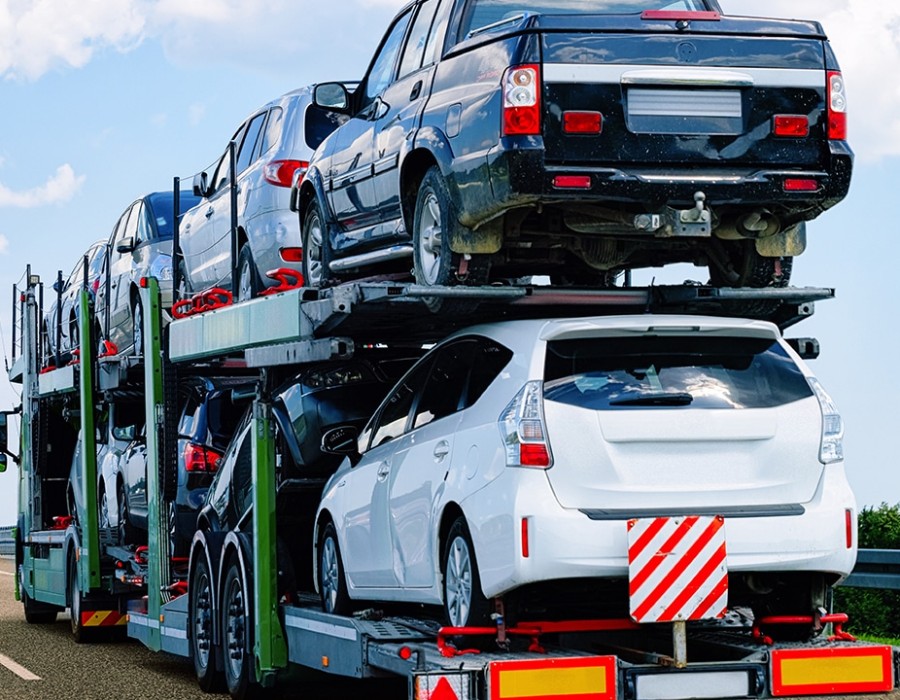Transporting a vehicle across states or even the country can seem complex, but understanding the process helps ease concerns. Whether you're relocating, buying a car online, or shipping a vehicle to a customer, the process of vehicle transport is designed to be efficient and secure. Among the many options available, Open Carrier Car Shipping stands out as the most commonly used and cost-effective method. This article breaks down the entire process of vehicle transport—from pickup to delivery—so you know exactly what to expect.
Step 1: Choosing the Right Shipping Method
There are two main types of vehicle transport:
- Open Carrier Car Shipping
- Enclosed Carrier Shipping
Open Carrier Car Shipping involves transporting your vehicle on a two-level, open-air trailer that holds multiple cars. This is the most popular and budget-friendly choice. It’s ideal for standard vehicles, including sedans, SUVs, and trucks that don’t require special handling.
In contrast, Enclosed Carrier Shipping offers protection from weather and road debris but comes at a premium price. It's typically reserved for luxury, exotic, or classic cars.
Step 2: Requesting a Quote and Booking
Once you decide on the transport type, you can:
- Request a Quote online or by phone
- Provide vehicle details (make, model, year, condition)
- Specify pickup and delivery locations
- Choose a transport date
Most car shipping companies offer instant online quotes. Rates depend on factors like distance, type of transport, time of year, and vehicle condition. Once you're happy with the quote, you'll sign a contract or shipping agreement.
Step 3: Vehicle Pickup
When your scheduled pickup day arrives:
- The driver contacts you to confirm time and location
- The Bill of Lading (BOL) is reviewed and signed by both parties
- A vehicle inspection is done to record the car’s condition
- Your vehicle is then loaded onto the open carrier
You don’t need to be present for pickup, but someone over 18 must be available to hand off the car and sign the documents.
Step 4: In-Transit Vehicle Tracking
Once the vehicle is in transit:
- Many carriers provide real-time tracking via phone or app
- Drivers may offer updates on estimated arrival times
- Insurance coverage during transport ensures peace of mind
Open Carrier Car Shipping is typically faster than enclosed shipping due to the high volume of vehicles being transported on popular routes.
Step 5: Vehicle Delivery
At the destination:
- The driver contacts you or the recipient to arrange delivery
- A final vehicle inspection is performed upon arrival
- The recipient signs the Bill of Lading confirming safe delivery
If the location is not accessible by the carrier (due to narrow roads or HOA restrictions), a nearby meeting point will be arranged.
Why Choose Open Carrier Car Shipping?
Here are some of the biggest benefits:
- Affordability – It’s the most economical way to ship a vehicle
- Availability – More open carriers means faster scheduling
- Efficiency – Ideal for standard vehicles and common shipping needs
- Insurance Included – Your vehicle is covered throughout the journey
For most people, Open Carrier Car Shipping offers the best balance of value, convenience, and reliability.
Tips for a Smooth Vehicle Transport Experience
- Clean your car before pickup so damage can be easily documented
- Remove personal belongings – Most carriers don’t allow extra items inside
- Check tire pressure and battery before shipping
- Take photos of your vehicle pre-shipment for records
FAQs About Vehicle Transport and Open Carrier Car Shipping
How long does vehicle transport take?
Transit time depends on the distance. Typically, coast-to-coast transport takes 7–10 days, while regional moves may take just 2–5 days.
Is Open Carrier Car Shipping safe?
Yes, it’s very safe. While your car is exposed to the elements, damage is extremely rare, and full insurance coverage is included during transport.
Can I ship an inoperable car?
Yes, but let the carrier know in advance. Inoperable vehicles require special equipment for loading and may cost more to transport.
Do I need to be present at pickup or delivery?
Not necessarily. You can designate someone over 18 to hand off or receive the car, but they must sign the Bill of Lading and complete the inspection.
What if my car is damaged during transport?
File a claim with the transport company’s insurance. Document the damage with photos and submit the inspection reports.
Conclusion
Understanding how vehicle transport works—from the initial quote to final delivery—can help you feel confident in the process. Open Carrier Car Shipping is the preferred method for most standard vehicle moves due to its affordability, speed, and wide availability. By preparing your car, choosing a reliable transport company, and knowing what to expect at each step, you can ensure a stress-free car shipping experience.




 (1).png)

Comments